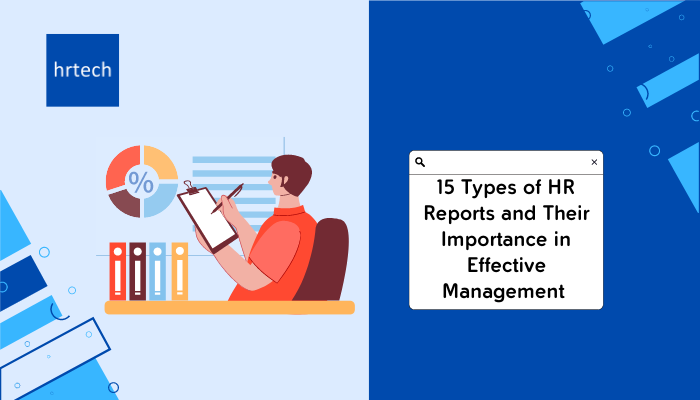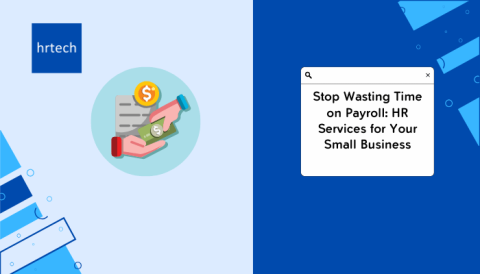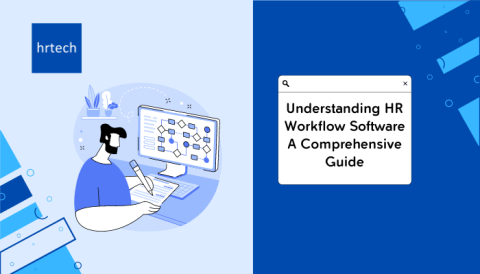Did you know 67% of employees feel frequent calls affect their productivity at work? Now, think about this for a second.
If you knew this data, you could easily improve the productivity of your team and contribute to business growth. Right? HR Reports help in finding crucial metrics that are often hard to find in regular day-to-day work operations.
In this guide, we’ll walk you through what HR reports are, why they are important and the top 15 types of HR reports with detailed examples. Keep reading till the end to get in-depth insights.
What Are HR Reports?

HR reports are essential tools that help organizations effectively manage their human resources. These reports provide valuable insights into various aspects of the workforce, enabling HR professionals and business leaders to make informed decisions.
In 2024, the landscape of HR reporting has evolved significantly, with advanced technologies and data analytics playing a crucial role in generating comprehensive and actionable reports.
Importance Of HR Reports:
HR reports are important for effective management as they provide a clear picture of an organization’s human capital.
These reports enable HR professionals to:
Make data-driven decisions
Identify trends and patterns
Measure the effectiveness of HR initiatives
Comply with legal requirements
Communicate with stakeholders
From recruitment and retention to performance management and employee engagement, HR reports offer lots of valuable insights that can drive organizational success.
Leveraging advanced technology can simplify the tracking and analysis of these crucial metrics. Explore our Marketplace to discover innovative tools that streamline HR reporting.
Types of HR Reports:

1. Recruitment and Selection Reports:
Recruitment and Selection Reports are crucial for understanding how well your hiring process works.
These reports help you track key metrics and make data-driven decisions to improve your recruitment strategy.
Things To Add:
- Time to Fill – How long it takes to fill open positions.
- Cost per Hire –The total cost of hiring a new employee.
- Quality of Hire – How well new hires perform in their roles.
Example Report:
In this example, we can see that the company has been improving its recruitment process over the entire year. The Time to Fill has decreased from 45 days in Q1 to 30 days in Q4, indicating that they are finding candidates faster.
The Cost per Hire has also gone down, showing that they are becoming more efficient in their hiring process. Finally, the Quality of Hire has increased, suggesting that they are bringing in better-suited candidates for their roles.
Implementation Tips:
In this example, we can see that the company has been improving its recruitment process over the entire year. The Time to Fill has decreased from 45 days in Q1 to 30 days in Q4, indicating that they are finding candidates faster. The Cost per Hire has also gone down, showing that they are becoming more efficient in their hiring process.
Finally, the Quality of Hire has increased, suggesting that they are bringing in better-suited candidates for their roles.
Implementation Tips:
Break down your recruitment metrics by department or role to identify areas for improvement.
Use industry benchmarks to compare your performance against competitors.
Conduct post-hire surveys to gauge your onboarding process’s effectiveness and identify improvement areas.
Regularly review and update your recruitment reports to ensure they remain relevant and actionable.
2. Employee Turnover and Retention Reports
Employee Turnover and Retention Reports help you understand how many employees are leaving your company and why.
These reports are essential for maintaining a healthy company culture and identifying areas for improvement in your retention strategies.
Things To Add:
- Turnover Rate – The percentage of employees who leave the company over a given period.
- Retention Rate – The percentage of employees who stay with the company over a given period.
- Reasons for Departure – The main factors contributing to employee turnover.
Example Report:
3. Employee Turnover and Retention Reports
Employee Turnover and Retention Reports help you understand how many employees are leaving your company and why.
These reports are essential for maintaining a healthy company culture and identifying areas for improvement in your retention strategies.
Things To Add:
- Turnover Rate – The percentage of employees who leave the company over a given period.
- Retention Rate – The percentage of employees who stay with the company over a given period.
- Reasons for Departure – The main factors contributing to employee turnover.
Example Report:
Top 3 Reasons for Departure:
Lack of career growth opportunities
Uncompetitive compensation
Poor work-life balance
In this example, we can see that the company’s turnover rate peaked in Q2 at 12% but has since decreased to 6% in Q4. The retention rate has also improved, reaching 94% in Q4.
By identifying the top reasons for departure, the company can focus on addressing these issues to further reduce turnover and improve retention.
Implementation Tips:
- Segment your turnover and retention data by department, role, and tenure to identify specific areas for improvement.
- Conduct exit interviews to gather more detailed feedback on why employees are leaving.
- Regularly survey your employees to gauge their satisfaction and engagement levels.
- Develop targeted retention strategies based on the insights gathered from your reports, such as improving career growth opportunities or adjusting compensation packages.
Understanding the nuances of turnover and retention reports is crucial. Our Advisory services offer personalized insights and strategies to effectively enhance employee retention. Contact us to learn more.
3. Training and Development Reports
Training and Development Reports help you assess the effectiveness of your employee training programs and identify areas for improvement.
These reports are crucial for ensuring that your employees have the skills and knowledge they need to perform their roles effectively and contribute to your organization’s success.
Things To Add:
Completion Rates
Pre and Post Training Assessments
Performance Metrics
Example Report:
In this example, we can see that all three training programs have high completion rates, indicating that employees are engaging with the training content.
The pre and post-assessment scores show significant improvements in employee knowledge and skills after completing the training, suggesting that the programs are effective.
Implementation Tips:
Align training programs with business objectives.
Use a variety of training methods – for instance, offer a mix of online courses, in-person workshops, and on-the-job training to cater to different learning styles and preferences.
After each training program, ask participants to provide feedback on the training’s content, delivery, and relevance.
Measure the ROI of training.
4. Performance Appraisal Reports
Performance appraisal reports are essential for evaluating employee performance and providing feedback. They help in making informed decisions about promotions, raises, and development opportunities.
Through these reports, managers and HR professionals objectively assess an employee’s achievements, strengths, and areas for improvement.
Things To Add:
Key performance indicators (KPIs) relevant to the employee’s role
Achievement of individual and team goals
Quality and timeliness of work
Communication and collaboration skills
Areas for improvement and development
Manager and peer feedback
Example Report:
The table presents a performance appraisal report for three employees, identified as A, B, and C, to maintain anonymity. The report evaluates each employee based on their Key Performance Indicators (KPIs), goal achievement, and a summary of the feedback received.
This performance appraisal report provides a comprehensive overview of each employee’s performance based on measurable KPIs, goal achievement, and qualitative feedback.
With this type of report, managers and HR professionals can quickly identify areas of strength and opportunities for improvement for each employee.
Implementation Tips:
Set clear, measurable goals aligned with company objectives.
Use a consistent rating scale to ensure fairness and comparability across employees.
Gather input from multiple sources, including self-evaluations, manager observations, and peer feedback.
Provide specific examples to support ratings and feedback.
Focus on behaviours and outcomes rather than personal characteristics.
Schedule regular check-ins to discuss progress and adjust goals as needed.
Use the appraisal process as an opportunity for growth and development, not just evaluation.
5. Compensation and Benefits Reports:
Compensation and benefits reports ensure your company offers competitive packages that attract and retain top talent.
These reports help you understand how your offerings compare to the market, the costs involved, and how well employees utilize the benefits provided.
Things To Add:
Salary ranges for each position
Bonuses, incentives, and stock options
Health insurance, retirement plans, and other benefits
Market comparison data
Cost analysis of each benefit
Employee utilization rates of benefits
Example Report:
The table presents a compensation and benefits report for two positions: Manager and Analyst. This report includes salary ranges, benefits offered, and a comparison to market benchmarks.
The cost analysis section reveals that the company spends $500 per employee per month on health insurance and $150 per participating employee per month on the 401(k) match.
This compensation and benefits report allows HR professionals and managers to assess the competitiveness of their offerings compared to market standards.
Implementation Tips:
Use reliable sources for market comparison data, such as industry surveys and benchmarking studies.
Analyze data by job level, location, and department to identify any disparities.
Collaborate with finance to ensure accurate cost analysis.
Survey employees to gauge satisfaction with current offerings and gather suggestions for improvement.
Present findings to leadership with recommendations for optimizing packages to balance competitiveness and cost-effectiveness.
6. Time and Attendance Reports:
Time and Attendance Reports help you track employee attendance, punctuality, and overtime hours.
These reports provide valuable insights into work patterns and productivity, enabling you to identify trends, manage labor costs, and address any issues that may impact operational efficiency.
Things To Add:
Absenteeism Rate
Punctuality
Overtime Hours
Example Report:
In this example, the absenteeism rate peaked in Q2 at 4% but improved to 2% in Q3 and Q4.
Punctuality remained high throughout the year, with a slight dip in Q2 but improving to 98% by Q4. Overtime hours were highest in Q2 at 1,200 hours but decreased significantly to 600 by Q4.
Implementation Tips:
Set clear attendance terms that outline expectations for punctuality, reporting absences, and requesting time off.
Review time and attendance data regularly to identify trends, such as higher absenteeism rates on certain days of the week or in specific departments.
If you notice an employee with consistently high absenteeism rates, schedule a meeting to discuss the issue.
Regularly review overtime hours to ensure they align with business needs and budget constraints.
7. Employee Satisfaction and Engagement Reports:
Employee satisfaction and engagement reports gauge the morale and motivation of your workforce.
These reports help you understand how connected and fulfilled employees feel at work, directly impacting productivity, retention, and overall organizational success.
Things To Add:
Employee Satisfaction Index (ESI) – A numerical score indicating overall employee satisfaction.
Net Promoter Score (NPS) – Measures how likely employees are to recommend your company as a great place to work.
Engagement Levels – The degree to which employees feel invested in their work and the company’s mission.
Factors influencing satisfaction and engagement include work-life balance, recognition, and growth opportunities.
Example Report:
So, this example report showcases three key metrics: Employee Satisfaction Index (ESI), Net Promoter Score (NPS), and Engagement Levels.
The ESI score of 78% indicates that a significant majority of employees are satisfied with their work experience. The 5% increase from the previous quarter suggests that recent initiatives or changes have positively impacted employee satisfaction.
The NPS of 65% reveals that a considerable portion of employees would recommend the company as a great place to work. The 3% improvement from the last quarter demonstrates growing employee loyalty.
The Engagement Level of 75% signifies that three-quarters of the workforce feel connected and invested in their work and the company’s success. The 2% rise from the previous quarter shows a positive trend in employee engagement.
The organization can develop targeted strategies to enhance the employee experience by focusing on these areas.
Implementation Tips:
Regular surveys will be conducted to gather data for these reports, at least quarterly.
Use a mix of quantitative and qualitative questions to gain deeper insights.
Act on the findings by addressing areas of concern and celebrating successes.
Share the results with employees and involve them in creating action plans.
8. Diversity and Inclusion Reports:
Diversity and Inclusion Reports help you assess the effectiveness of your diversity initiatives and understand the benefits of a diverse and inclusive workplace.
These reports provide insights into the demographic composition of your workforce, employee perceptions of inclusion, and any disparities in representation or opportunities.
Things To Add:
Demographic Breakdown
Inclusion Index
Disparity Ratio
Example Report:
In this example, the company-wide gender ratio is 60% male to 40% female, but the leadership team has a less balanced ratio of 75% male to 25% female.
Racial diversity is lower in leadership (15%) compared to the overall company (30%).
The inclusion index scores suggest that employees generally feel included, but there is room for improvement, particularly at the leadership level.
Implementation Tips:
Establish specific, measurable goals for improving diversity and inclusion.
Review demographic data across different levels, departments, and job types to identify any areas where certain groups are underrepresented and then work on those areas.
Regularly conduct inclusion surveys to gauge employee perceptions and identify areas for improvement.
Monitor progress by reviewing diversity and inclusion metrics and measure the progress towards your goal.
9. Health and Safety Reports:
Health and Safety Reports help you monitor workplace accidents, assess the effectiveness of your health and safety programs, and understand the connection between the workplace environment and employee well-being.
These reports provide crucial insights for maintaining a safe and healthy work environment and ensuring compliance with relevant regulations.
Things To Add:
Incident Rates – The frequency and severity of workplace accidents or injuries.
Compliance Audits – Results of internal or external audits of health and safety practices and procedures.
Safety Training Completion – The percentage of employees who have completed required safety training.
Example Report:
In this example, the incident rate has steadily decreased throughout the year, from 2.5 incidents per 100 employees in Q1 to 0.9 in Q4.
The compliance audit scores have improved, reaching 98% by Q4. Safety training completion rates have also increased, with all employees completing required training in Q3 and Q4.
Implementation Tips:
Conduct a thorough investigation for each workplace accident or injury to identify root causes and develop preventive measures.
Schedule periodic internal safety audits to identify potential hazards and assess compliance with health and safety procedures.
Develop a comprehensive safety training program that includes both initial and refresher courses.
Encourage employee participation in safety committees, suggestion programs, and hazard reporting systems.
10. Workforce Analysis Reports:
Workforce Analysis Reports comprehensively overview your organization’s workforce demographics and skills inventory.
These reports help you predict future HR needs and identify potential workforce gaps, enabling you to make informed decisions about recruitment, training, and succession planning.
Things To Add:
Age Distribution
Skillset Analysis
Future Hiring Needs
Example Report:
Top 5 Skills in Workforce:
Data Analysis
Project Management
Software Development
Digital Marketing
Customer Service
Future Hiring Needs:
AI and Machine Learning Specialists
UX Designers
In this example, the age distribution shows that the majority of the workforce (60%) is between 30 and 50 years old, with 25% under 30 and 15% over 50.
The skill set analysis highlights that the organization has strengths in data analysis, project management, and software development, among others. The report also identifies future hiring needs in AI and UX design.
Implementation Tips:
Analyze age distribution and develop strategies accordingly.
Assess skill gaps by comparing your workforce’s current skill set with the skills required to meet future business objectives.
Use workforce analysis data to create long-term hiring and training plans that align with your organization’s strategic goals.
Leverage data for decision-making about resource allocation, organizational structure, and employee development initiatives.
11. Labor Relations Reports:
Labor Relations Reports help you monitor the state of employee relations and assess the impact of your organization’s labour policies.
These reports provide insights into employee grievances, feedback, and collective bargaining outcomes, enabling you to maintain a harmonious workplace and address any issues proactively.
Things To Add:
Grievance Resolution Time – The average time taken to resolve employee grievances.
Employee Feedback – Results of employee surveys or feedback mechanisms related to labour relations.
Collective Bargaining Outcomes—These are the key outcomes of collective bargaining agreements, including changes to wages, benefits, or working conditions.
Example Report:
In this example, the average grievance resolution time has decreased from 30 days in Q1 to 15 days in Q4, indicating improved efficiency in addressing employee concerns. Employee satisfaction with labour relations has also increased, reaching 4.2 out of 5 by Q4.
Implementation Tips:
Regularly monitor the time taken to resolve employee grievances and set targets for improvement.
Conduct regular employee surveys or focus groups to gather feedback on labour relations and identify areas for improvement.
Clearly communicate the outcomes of collective bargaining agreements to all employees, highlighting the benefits and any changes to working conditions.
Encourage open and transparent communication between management and employees on matters of labour relations.
12. HR Compliance Reports:
HR Compliance Reports help you ensure adherence to legal and regulatory requirements within your HR practices.
These reports are crucial in minimizing organizational risk by identifying potential compliance issues and tracking the effectiveness of your compliance training and auditing efforts.
Things To Add:
Audit Results – Findings from internal or external audits of HR practices and procedures.
Compliance Training Completion – The percentage of employees who have completed required compliance training.
Violations – The number and nature of any compliance violations or incidents.
Example Report:
In this example, the compliance audit scores have steadily improved throughout the year, reaching 98% by Q4.
Compliance training completion rates have also increased, with all employees completing required training in Q3 and Q4. The number of compliance violations has decreased from 2 in Q1 to 0 in Q3 and Q4.
Implementation Tips:
Schedule periodic internal audits of HR practices to identify potential compliance risks and ensure adherence to legal and regulatory requirements.
Provide comprehensive compliance training.
If a compliance violation occurs, conduct a thorough investigation to determine the root cause and take appropriate corrective action.
Regularly review updates to labor laws and regulations that impact HR practices.
13. HR Analytics and Predictive Reports:
HR Analytics and Predictive Reports leverage HR data to provide insights for strategic planning and decision-making.
These reports utilize advanced techniques, such as AI and machine learning, to identify patterns, predict future trends, and optimize HR processes.
Things To Add:
Attrition Risk Scores – Predictive scores indicate employees’ likelihood of leaving the organization.
Future Performance Predictions – Forecasts of employee performance based on historical data and key indicators.
Hiring Success Forecasts – Predictions of the success of potential hires based on factors such as skills, and experience.
Example Report:
In this example, the average attrition risk score has decreased from 25% in Q1 to 15% in Q4, indicating that the organization’s retention efforts are effective.
The percentage of employees predicted to exceed performance targets has increased from 60% in Q1 to 75% in Q4, suggesting that the company’s performance management strategies are yielding positive results.
The average hiring success forecast has also improved, reaching 90% by Q4, indicating that the organization is making more accurate hiring decisions.
Implementation Tips:
Use attrition risk scores to proactively identify employees at high risk of leaving. Develop targeted retention strategies, such as offering professional development opportunities or addressing work-life balance concerns, to reduce the likelihood of turnover.
Leverage performance predictions to identify high-potential employees and provide them with tailored development plans.
Incorporate hiring success forecasts into your recruitment process to identify candidates with the highest likelihood of success.
Regularly review the accuracy of your predictive models and update them based on new data and feedback.
14. Employee Lifecycle Reports:
Employee Lifecycle Reports track the employee journey from hiring to retirement, providing insights into key stages of the employee experience.
These reports help you analyze trends and patterns, identify areas for improvement, and enhance the overall employee experience.
Things To Add:
Onboarding Efficiency
Career Progression
Exit Interviews
Example Report:
In this example, the average time to productivity for new hires has decreased from 45 days in Q1 to 30 days in Q4, indicating that the onboarding process has become more efficient.
The internal promotion rate has increased from 10% in Q1 to 18% in Q4, suggesting that the organization provides career growth opportunities.
The top reasons for departure vary each quarter, highlighting the importance of regularly reviewing exit interview data to identify and address potential issues.
Implementation Tips:
Use onboarding efficiency metrics to identify bottlenecks in the process.
Analyze career progression data to identify trends in internal promotions.
Regularly review exit interview data to identify common reasons for departure.
Conduct regular employee engagement surveys throughout the employee lifecycle to gauge satisfaction and identify potential issues early on.
15. Annual HR Report:
An Annual HR Report is a comprehensive summary of an organization’s human resources activities and outcomes over the past year. It provides a high-level overview of the company’s workforce, including key metrics, trends, and achievements.
Things To Add:
Workforce Details
Talent Acquisition
Employee Engagement and Retention
Learning and Development
Compensation and Benefits
Example Report:
This example Annual HR Report provides a concise overview of key HR metrics for the organization.
It includes data on workforce demographics, talent acquisition, employee engagement and retention, learning and development, and compensation and benefits. The report highlights the company’s strengths, such as a high engagement survey participation rate and a strong retention rate.
It also identifies areas for improvement, such as addressing the top reasons for turnover and closing skills gaps in leadership and technical skills.
Implementation Report:
Segment data by department, place or job level to gain deeper insights and identify trends specific to different parts of the organization.
Collaborate with other departments to gather relevant data and insights.
Use the report as a tool for continuous improvement by setting clear goals and action plans for the upcoming year.
Use data visualization techniques to make the report more engaging and easily understood.
Compiling an annual HR report requires a comprehensive understanding of key metrics and trends. Our Academy offers data analysis and HR reporting courses to help you form the right strategies.
Transforming HR through Agile Workforce Solutions
Conclusion:
HR reports are essential tools for effective management in any organization. They provide critical insights into various aspects of the workforce, helping leaders make informed decisions.
As technology advances, HR reporting continues to evolve, offering even more comprehensive and actionable data.
In 2024 and beyond, using a variety of HR reports will be key to making smart, data-driven choices that give organizations a competitive edge.





